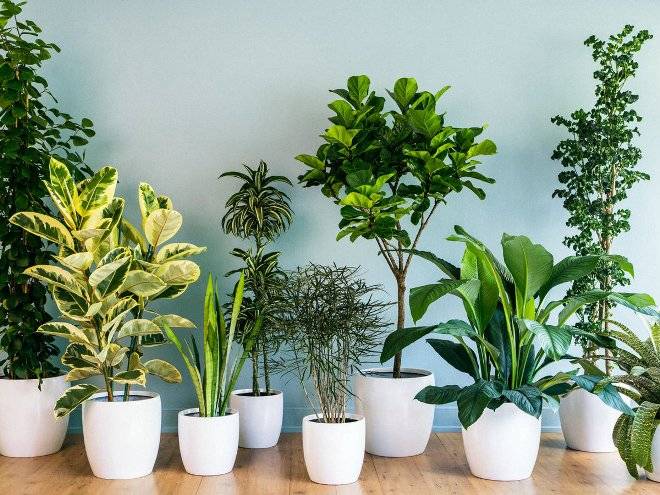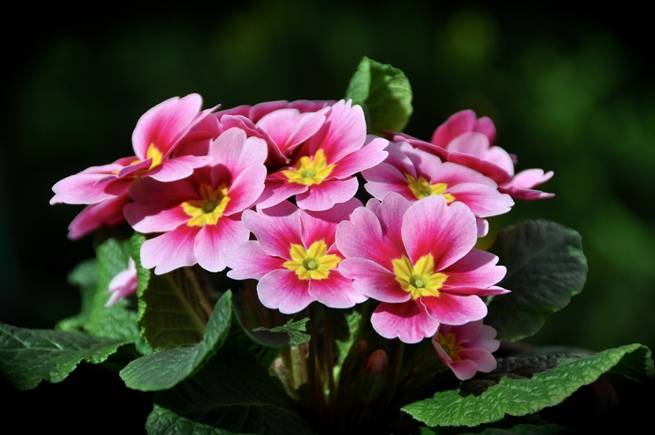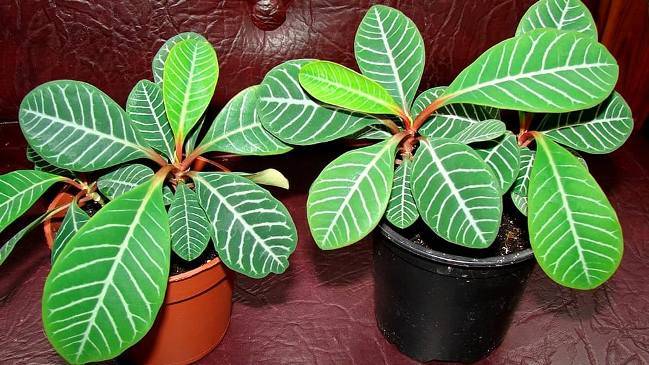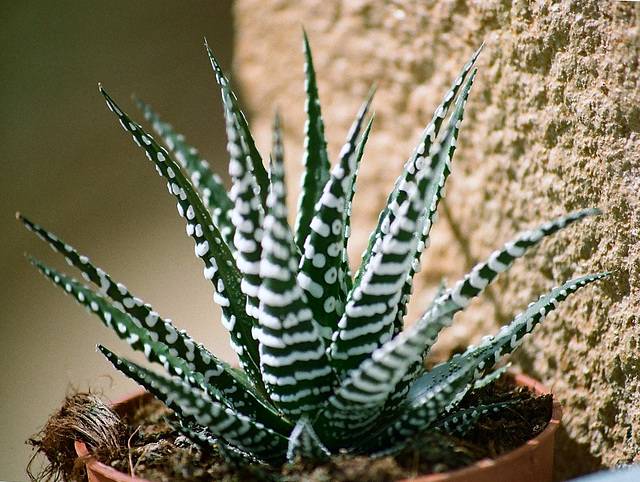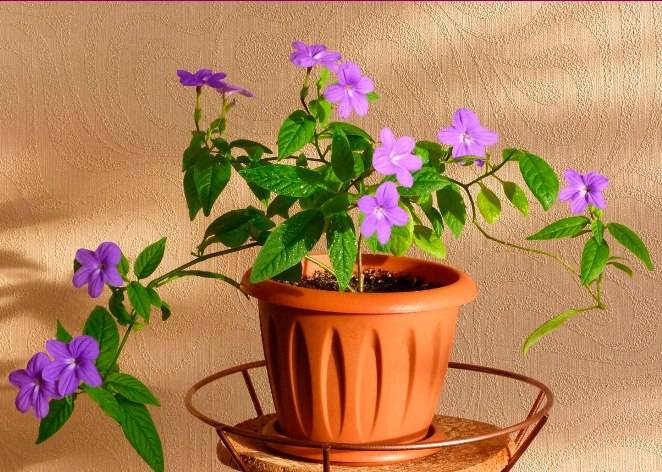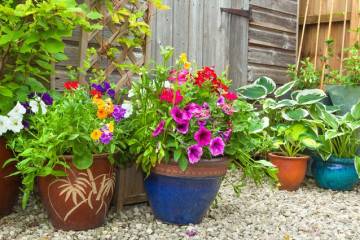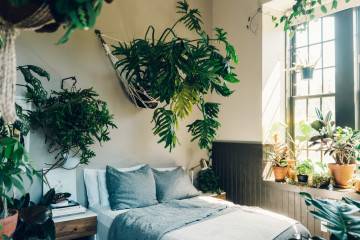Poisonous indoor plants, dangerous to humans
Content:
Indoor flowers decorate the home, fill it with oxygen, bring warmth and harmony into the surrounding atmosphere. In addition to being picturesque, plants have a healing function. But not all flowers are harmless. There are poisonous indoor plants that, if handled carelessly, harm others. Such instances are presented below.
Poisonous indoor plants
When buying an unfamiliar home plant, you should definitely get acquainted with its properties. Some flowers are partially poisonous, and the danger comes from individual organs.
Favorite house flowers with large decorative leaves can be harmful to health, so you should know their names.
Monstera
This large plant with large openwork leaves looks good in decorative tubs, but has poisonous characteristics.
Penetrating into the digestive tract, it provokes a burning sensation in the mouth and increased salivation. Indigestion and intestinal inflammation begin. Leaves that children can inadvertently taste are especially dangerous.
Ficus
The broadleaf specimen is not a very harmful indoor plant. Its beneficial properties are used in the treatment of many diseases.
But the content of the milky sap in the leaves can be troublesome. Once on the skin, the juice causes swelling, redness, blisters. But these phenomena are passing.
Scheffler
A large plant with wide leaves absorbs negative energy, calms the nervous system, and stabilizes sleep.
But the cuddly plant is a serious allergen. The juice causes skin rashes and burns. If a flower grows in the house, take care of it with great care.
Dieffenbachia
Poisonous home flower with beautiful decorative leaves. The danger comes from the juice. On contact with the skin, a burning sensation is felt, on the mucous membrane of the eye - conjunctivitis occurs. Burns and swelling are possible.
The intake of juice into the internal organs is fraught with vomiting and diarrhea. Seizures and even muscle paralysis are characteristic. Animals are defenseless against the harmful properties of dieffenbachia.
Trichocereus
There are few poisonous plants among cacti. Still, thorny flowers are placed in places inaccessible to small children, dogs and cats.
The trichocereus flower belongs to poisonous cacti. Releases toxins that can lead a living being to death. All parts of the plant are poisonous.
Toxins act on the nervous system. In severe cases, seizures, paralysis, and cardiac arrest occur.
Pachypodium
Children and animals can taste the unusual palm leaf or flower growing at home. But not all bushes are harmless.
The small pachypodium palm tree with a thorny trunk attracts the attention of children and animals. But if at least one leaf gets into the mouth, severe poisoning and damage to the nervous system will begin.
The most poisonous indoor plants: 10 flowers that can kill you
Poisonous houseplants can cause the following lesions:
- slight irritation;
- dermatitis;
- burn;
- an ulcer;
- rash;
- nausea;
- dizziness;
- severe poisoning.
Some flowers can kill a person or a pet. Their descriptions are presented below.
Azalea
Or homemade rhododendron.
A beautiful plant with red and white flowers, poisonous due to the glycoside content, which causes severe poisoning.
Consequences of use: convulsions, interruptions, cardiac arrest.
Pots with culture are recommended to be placed out of the reach of children and not installed in the bedroom.
Primrose or primrose
A plant with velvet leaves and flowers of different colors is often placed in a nursery, and this is dangerous for its inhabitants. All parts of the flower secrete alkaloids, which is fraught with dizziness and nausea. From touching the foliage, itching and burning occurs. To avoid danger, after communicating with a flower, they immediately wash their hands.
Cyclamen
Figure 7. Cyclamen
An ornamental plant whose seeds and roots secrete poison.
A domestic pet, having tasted the tubers, gets a heavy setting, sometimes incompatible with life. When the juice enters the nasopharynx, a person develops a mucosal burn.
Amaryllis Belladonna
The main danger of the plant is the juice of the bulbs. When it gets inside, vomiting is possible. In addition, if the leaf is cracked, white milk is released, which is undesirable for the skin. Thoroughly washed hands will save you from dangerous influences.
Geranium
The plant has long been used as an antiseptic. Geranium is indispensable for stress, helps with otitis media and sore throat.
However, the flower has a strong and pungent odor that causes allergic reactions. Therefore, geranium is harmful to children, pregnant women, diabetics.
Spurge
The flower is found in many homes, but belongs to the poisonous indoor palms. The poison is found in seeds and milky juice. Therefore, care must be taken when caring for a flower.
The first signs of milkweed poisoning:
- nausea;
- diarrhea;
- dizziness.
If the juice gets inside, burns of the mucous membrane are possible.
Striped aloe
Aloe is a flower with healing properties. The same group includes striped aloe, a beautiful but dangerous houseplant.
It is not recommended to use a flower for treatment. Internal bleeding and even miscarriages in pregnant women are possible.
Hydrangea
Parts of the plant contain hydrocyanic acid. Once in the body, it has a negative effect on the nervous system and heart. And having a pet, you have to choose between him and a hydrangea.
Hydrangea is looked after exclusively with gloves.
Aglaonema is changeable
Aglaonema juice and berries pose the most serious danger to the inhabitants of the dwelling.
When poisons enter the eyes, they cause conjunctivitis, and on the mucous membrane of the upper respiratory tract, swelling of the throat, which is fraught with serious complications.
Brovallia
Poisonous flower home from the nightshade family. Poisons are found in all parts of the plant and negatively affect the internal organs and mucous membranes of the eyes. The flower is grown away from children and animals.
When purchasing a plant for your home, pay attention not only to the external beauty, be sure to study its negative sides. Flowers should be safe for children and adults, as well as for pets who are very curious and can taste the poisonous plant. And if a person is able to somehow protect himself, then the animal can get sick or die.
